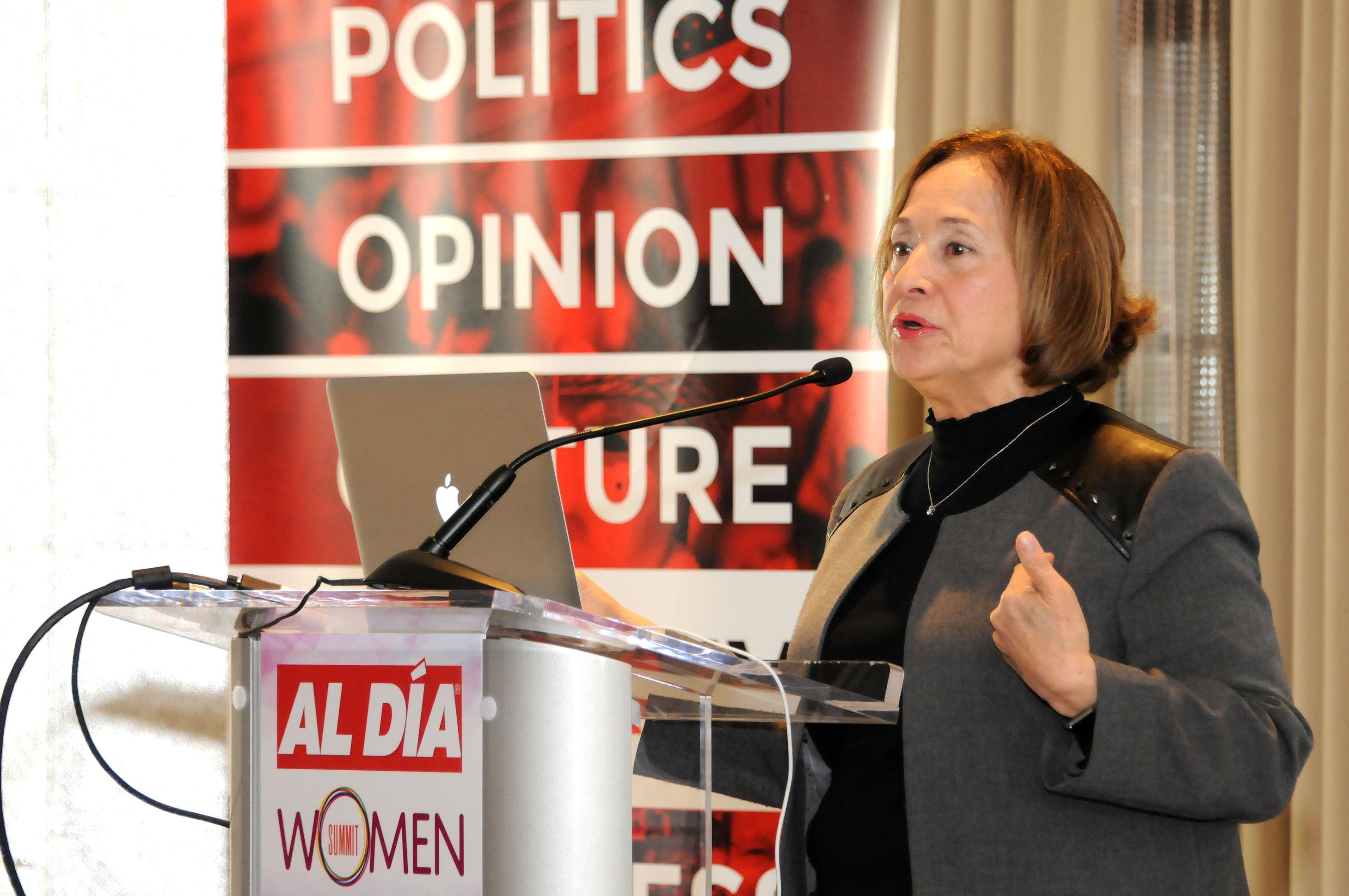
The state of Latinas and women in the U.S.
To open up AL DÍA Women's Summit, Sara Manzano-Diaz gave a detailed talk about the current state of Latinas in the U.S.
Sara Manzano-Diaz set the tone for AL DÍA Women’s Summit—a celebration of Latinas and multicultural women in leadership—with a detailed overview of the current state of Latinas and women in the United States.
While serving as the director of the Women’s Bureau—the only agency of the federal government that is specifically tasked with the concerns of working women—Manzano-Diaz took a lot of pride in what that title holds.
“I had the honor and the privilege to represent 72 million of us in the workplace,” she said during AL DIA’s Women’s Summit. Her time as the director of the Women’s Bureau (2010-2012) granted her the opportunity to focus on what she’s most passionate about—the issues that plague women and Latinas.
As both a woman and a Latina, Manzano-Diaz understands the important role that both communities play in the overall functioning of the United States.
Latinos are the largest racial/ethnic minority in the U.S., making up approximately 59 million people or 18 percent of the nation's total population, according to the U.S. Census. They greatly impact the nation's economy. Their buying power in 2015 was $1.5 trillion, as Latino businesses have grown to twice the national average—generating $350 billion in annual revenue, she said.
However, women also make up a large percentage of the U.S. population, but don't receive a great number of opportunities. Women make up only four percent of CEOs and 17 percent of board members, and make far less money than their male counterparts.
“Even though we have the numbers, the problem is the economic implications,” Manzano-Diaz said. “When we’re not at the table, we don’t have a say.”
For Latina women, in particular, they make an even smaller fraction of the percentage of salary that men make on average, compared to Anglo women and African American women.
Sara Manzano-Diaz outlines the women's pay gap: Latina women earn 59 cents for every dollar earned by men. pic.twitter.com/dg0jHE9zGp
— AL DÍA News (@ALDIANews) November 2, 2018
“The reason why equal pay is important is because the wage gap hurts the entire family,” Manzano-Diaz said.
RELATED CONTENT
This wage gap totaled over decades add up to hundreds of thousands of dollars lost for women. That denies women more money for housing, education, food and child care. It especially affects women after retirement, Manzano-Diaz said, because the less money a women makes as a worker translates to less received money in retirement.
Getting rid of the pay gap would benefit many.
“If people were paid today equally, what it would do is cut the poverty rate in half for working women and their families," Manzano-Diaz said. “It would lift people out of poverty, and also it would add $513 billion to our economy.”
Manzano-Diaz has worked decades advocating against the issues that plague women and Latinas.
During her speech at the Women’s Summit, she encouraged everyone—especially women and Latinas—to promote their own political empowerment.
“We must be engaged in the Democratic process,” Manzano-Diaz said.
Manzano-Diaz was just one of a long list of powerful, influential and successful women who gave inspiring presentations during the event, including keynote speaker Nina Vaca, CEO of Pinnacle Group; and Yai Vargas, founder & CEO of Latinista. Maria Pajil Battle was awarded with the Pinnacle Award, and four women—Jennylee Ramos, Yocasta Lora, Yashira "Yaya" Marie Rivera and Amaris Hernandez Padgett—received the Women of Merit Award.











LEAVE A COMMENT: